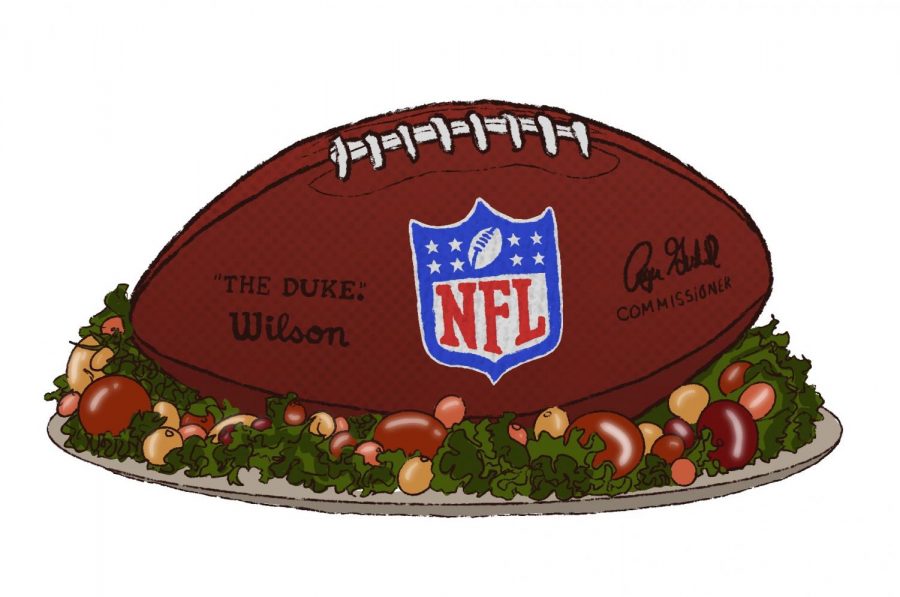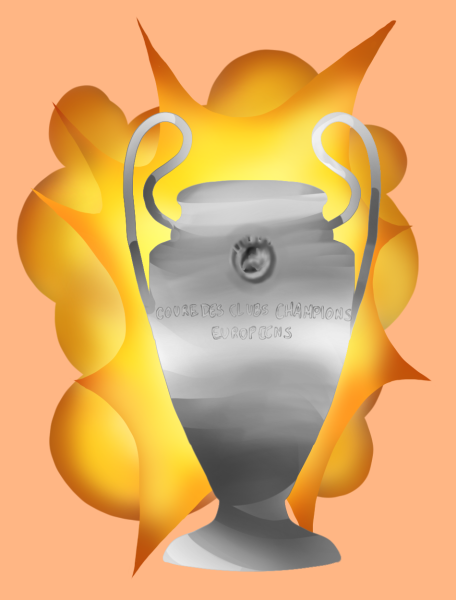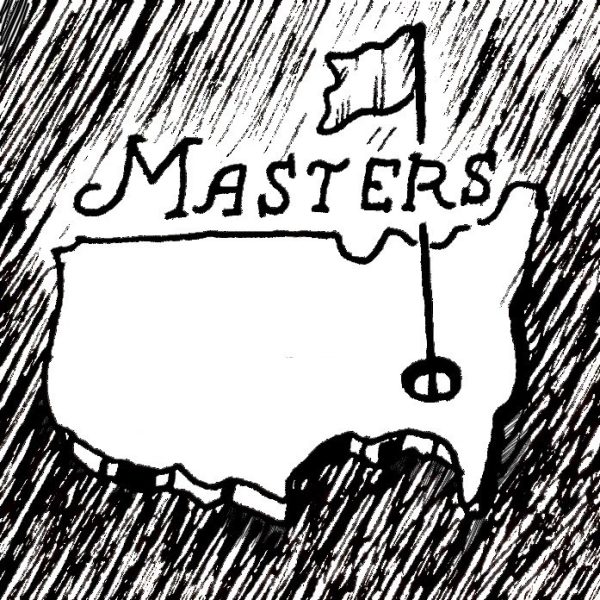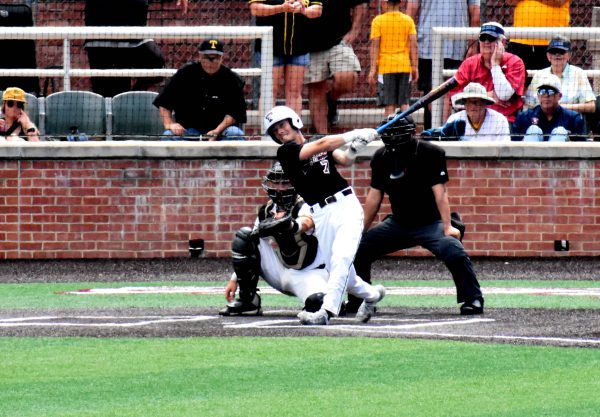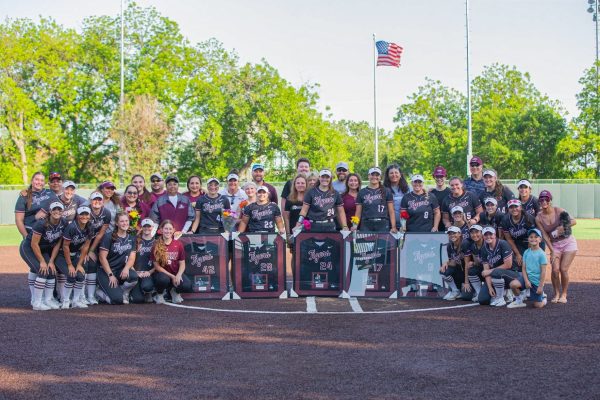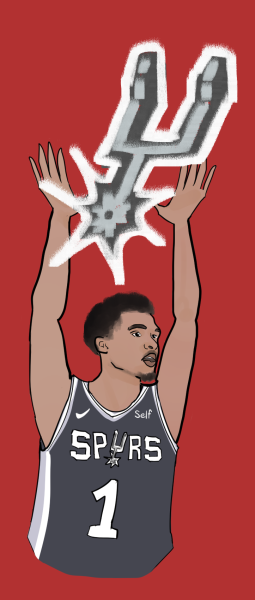A brief history of holiday football
Food, family and football at the end of year celebrations
We’re at that time of year again, folks. The trees are shedding their leaves, the air is getting colder and that one cousin you only see once a year is back in town. The holiday season means a lot to almost everyone, whether for the family or the food. However, one more aspect of the holiday season is just as crucial as the pumpkin pie: football. For those who aren’t fans of football, November through January is a dreaded time.
The Thanksgiving festivities would be simple if your family was anything like the stereotypical Norman Rockwell-style American household. Eat a turkey larger than a small child, watch an NFL football game, go outside to play in the family’s annual Turkey Bowl, go back inside to watch another NFL game and then promptly pass out due to the stress of the day. The stereotype is in countless movies, TV shows and stories. One of my favorite examples of football fanaticism is in “The Blind Side,” where the Touhy family is committing to eating, playing Madden and watching Ole Miss (at the same time).
But even if you lived in a family like mine, where no one is an athlete and not many care about football, your Thanksgiving probably wouldn’t be football-free. Eat a turkey larger than a small child, ignore the Lions game because they are constantly rebuilding, eat more dessert than is reasonable, watch the Cowboys suffer in front of a national audience and then promptly pass out due to the stress of the day. Either way, the tradition of football on Thanksgiving is essential to most families across the country.
The Thanksgiving holiday football tradition was started almost at the beginning of organized football itself. College football dates back to 1869. The first Thanksgiving football game took place just seven years later, with Yale defeating Princeton 2-0 in 1876. The logic behind the game was that since most people were off of work for that day, it would be watched by more people. Thanksgiving football eventually expanded to more schools, including the University of Michigan (who claims to have started the annual tradition). By the time that professional football became more mainstream, Thanksgiving football was an established event.
On a national level, multiple teams typically participated in Thanksgiving football until World War II, when all games were put on hold. However, when football returned, the Detroit Lions were the sole holders of a Thanksgiving day football host slot.
In 1966, a small startup team from Dallas, Texas, joined the fray. The Cowboys decided to host Thanksgiving football since “there was nothing else to watch on that day,” according to the article on the Dallas Cowboys website discussing the first Cowboys game. (The Lions have been irrelevant for the last 55 years, and this goes to prove it.)
However, the plan was also strategic for owner Tex Schramm. Besides higher attendance numbers (the ‘66 game had 82,260 people in attendance), the Thursday game would give opponents less time to game-plan. The league saw the immense success of the Thanksgiving Day games and granted Dallas a permanent host slot on the holiday from 1978.
The NFL added a third game to the Thanksgiving holiday schedule in 2006, and it has remained the same since then. The Detroit Lions play in the morning, Dallas Cowboys in the afternoon and a coin flip in the evening. The only year the three-game schedule hasn’t happened was in 2020. The game was delayed between the Steelers and Ravens three times due to COVID and once, hilariously, due to a Christmas Tree Lighting (NBC had a contract to broadcast the National Christmas Tree Lighting Ceremony, so the game was moved to 3:45 p.m. EST on the Wednesday after Thanksgiving), but excluding that outlier, Thanksgiving has been a holiday of endless turkeys, talks and tackles.
Turkey Day traditions go on even at the high school level, with the playoffs in full swing for most states. Texas, in particular, has critical games for schools across the state, with the Regional Championship games taking place over the November holiday.
The next big holiday after Thanksgiving is Christmas, which has a much smaller history regarding football. The first NFL football game on Christmas came in 1971, and since then, there have been only 21 other Christmas Day games. Games are very rarely scheduled for the Christmas holiday, even on the years that Dec. 25 falls on a Sunday.
However, the end of December is a critical time for the NFL, with the playoffs just around the corner. The news will be filled with analysts talking over each other about how the final two weeks of the regular season will affect the seedings. The holiday is equally small for college football, with only a few bowl games dotted throughout the sport’s history on the special day. Football fans won’t have to wait long, however, for the sport to reach a crescendo.
New Year’s Day is notorious for the college football playoffs, with the New Year’s Six taking over every major network on Jan. 1. The six major Bowl games pit the best schools in the U.S. against each other on a national stage. The bowl games are the final games of the season for teams that manage to make it to the postseason, and two of the New Year’s Six Bowl games will decide who advances to the National Championship game. The Cotton (Dallas, TX), Orange (Miami, FL), Fiesta (Phoenix, AZ), Peach (Atlanta, GA), Rose (Pasadena, CA) and Sugar (New Orleans, LA) Bowls bring in millions of viewers every year and are some of the most well-attended events in all of sports.
Overall, the holiday season is, to borrow a line from Andy Williams, the most wonderful time of the year. Whether it’s your cousin Johnny throwing the game-winning pass in your family’s annual Turkey Bowl or Tom Brady stepping onto Lambeau Field, this time is one that everyone looks forward to for one reason or another. No matter what form of football you may take part in this holiday season, however, make sure to raise a turkey leg to Princeton, Yale and a tradition that burns on 145 years later.

Hey! I'm Caleb Reed, and I'm the new Sports Editor for the Trinitonian this year. I love all kinds of sports and I've got a passion for both commentary...

I'm a senior Computer Science major and a Classical Studies minor from Newton, North Carolina with a passion for art. I also work at the Center for Experiential...

